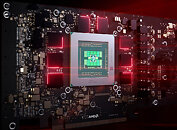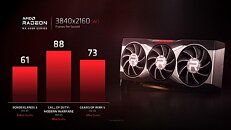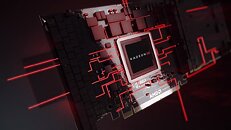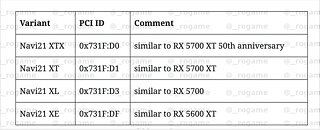
Sapphire Unveils Reference-design Radeon RX 6800 XT and RX 6800
Unlike NVIDIA, AMD still relies on its add-in board (AIB) partners to sell reference design (made by AMD) graphics cards, and Sapphire just announced its lineup. The company unveiled its reference-design Radeon RX 6800 XT and RX 6800 cards. The RX 6800 XT is characterized by its triple-slot cooling solution, while the RX 6800 makes do with a slimmer dual-slot one. Both cards are based on the 7 nm "Navi 21" silicon and feature 16 GB of 16 Gbps GDDR6 memory over a 256-bit wide memory interface, cushioned by 128 MB of on-die Infinity Cache.
The RX 6800 XT is configured with 72 out of 80 RDNA2 compute units on the "Navi 21" silicon, working out to 4,608 stream processors, 72 ray accelerators, 288 TMUs, and 128 ROPs. The engine clock of the RX 6800 XT boosts up to 2.25 GHz. The RX 6800, on the other hand, features 60 out of 80 RDNA2 compute units, which make up 3,840 stream processors, 60 ray accelerators, 240 TMUs, the same 128 ROPs, and the same memory subsystem as the RX 6800 XT. Given that these are reference cards, Sapphire could price them at AMD's baseline, with the RX 6800 XT going for $649, and the RX 6800 at $579.
The RX 6800 XT is configured with 72 out of 80 RDNA2 compute units on the "Navi 21" silicon, working out to 4,608 stream processors, 72 ray accelerators, 288 TMUs, and 128 ROPs. The engine clock of the RX 6800 XT boosts up to 2.25 GHz. The RX 6800, on the other hand, features 60 out of 80 RDNA2 compute units, which make up 3,840 stream processors, 60 ray accelerators, 240 TMUs, the same 128 ROPs, and the same memory subsystem as the RX 6800 XT. Given that these are reference cards, Sapphire could price them at AMD's baseline, with the RX 6800 XT going for $649, and the RX 6800 at $579.














